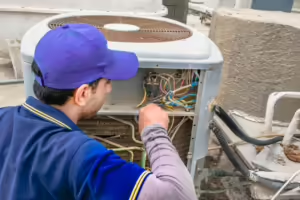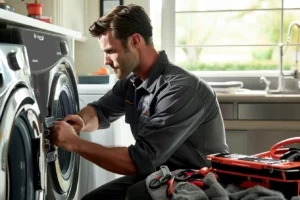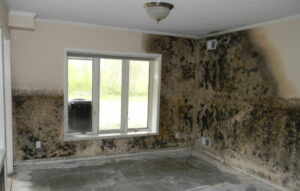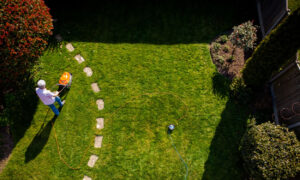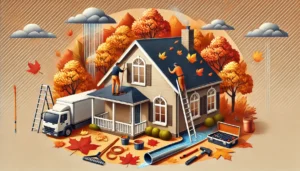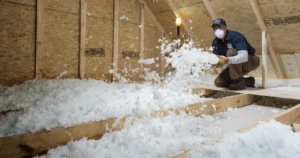January is a time for fresh starts, but it’s also the coldest month in many areas, which can wreak havoc on your plumbing system. Hidden leaks are often overlooked but can lead to costly water damage, increased utility bills, and even mold growth if not addressed promptly. Here’s why January is the perfect time to check for hidden leaks—and how doing so can save you money, stress, and your home’s integrity.
1. Cold Weather Increases Leak Risks
Freezing temperatures can put extra pressure on your pipes, leading to cracks, breaks, or slow leaks.
- Why it happens:
- When water freezes, it expands, putting stress on pipes, especially those in unheated or poorly insulated areas.
- Even small cracks caused by freezing can let water slowly seep out when temperatures rise again.
- Areas to check:
- Exposed pipes in basements, crawl spaces, and garages.
- Outdoor plumbing connections, like hose bibs.
- Pipes running along exterior walls.
- Pro Tip: If you suspect frozen pipes, inspect them for drips or water spots once they thaw.
2. Prevent High Water Bills
Hidden leaks, even small ones, can cause your water bill to spike dramatically during winter months.
- What to look for:
- Unexplained increases in your water bill despite normal usage.
- The sound of running water when no taps are open.
- Damp spots on walls, ceilings, or floors that may indicate a slow leak.
- How to test:
- Turn off all water in your home and check your water meter. If the meter continues to run, there’s a leak somewhere.
- Why it matters: Addressing leaks now prevents wasted water and keeps your monthly bills in check—saving you money.
3. Avoid Expensive Water Damage
A small, hidden leak can snowball into a major issue, causing significant water damage over time.
- The risks:
- Structural damage: Water can weaken drywall, wood, and even your foundation.
- Mold growth: Damp areas create the perfect environment for mold, which can lead to health problems and costly remediation.
- Floor and ceiling damage: Leaks can ruin hardwood floors, carpets, and ceilings if left unchecked.
- Where to check:
- Under sinks, behind appliances like dishwashers and washing machines, and around toilets.
- Attics and basements where leaks might go unnoticed for months.
- Pro Tip: Use a moisture meter to detect hidden water buildup behind walls or ceilings.
4. Protect Your Home During Freeze-Thaw Cycles
January weather often brings freeze-thaw cycles, where pipes are prone to subtle expansions and contractions.
- Why it’s a problem:
- The repeated freezing and thawing can weaken pipes and joints, leading to small cracks that drip water over time.
- These tiny leaks may go unnoticed until they cause major damage.
- What to do:
- Inspect plumbing fixtures, joints, and connections for signs of condensation, corrosion, or water pooling.
- Seal any exposed gaps or drafts that might allow cold air to affect pipes.
5. Catch Appliance Leaks Before They Worsen
Appliances like water heaters, washing machines, and refrigerators are more prone to leaks during winter because they’re working harder.
- What to look for:
- Water pooling around or under the appliances.
- Damp, musty odors or mold near appliances.
- Reduced appliance performance (e.g., inconsistent water heating).
- How to prevent it:
- Inspect hoses and connections for cracks, wear, or loose fittings.
- Replace old hoses or seals, and clean out appliance filters regularly.
- Why it matters: Appliance leaks are easy to miss but can cause costly damage to floors and nearby walls if ignored.
6. Save Your Home From Foundation Issues
Slow, hidden leaks around pipes near the foundation can lead to long-term structural damage.
- Why it happens:
- Water from leaks can saturate the ground near your foundation, causing soil shifts or cracks in concrete.
- In colder climates, this water can freeze and expand, further compromising your home’s structure.
- Signs to watch for:
- Cracks in your walls or floors.
- Water stains along the foundation or basement walls.
- Sudden changes in flooring, such as warped wood or lifting tiles.
7. Prevent Mold Growth and Poor Air Quality
Dampness caused by leaks can lead to mold growth in hidden areas, impacting your home’s air quality.
- Where mold thrives:
- Behind walls, under floors, and inside cabinets.
- Near pipes and in poorly ventilated bathrooms or basements.
- What to look for:
- Musty odors or visible mold spots.
- Increased allergies, coughing, or respiratory issues in your family.
- Why it’s urgent: Mold spreads quickly and becomes costly to remove, while also posing health risks.
8. Protect Your Plumbing for the Rest of Winter
Checking for hidden leaks in January helps you identify and resolve small issues before they become emergencies in the coldest months.
- What to do next:
- Address any slow leaks or signs of water damage promptly.
- Insulate pipes in vulnerable areas to reduce the risk of freezing.
- Schedule a professional plumbing inspection for peace of mind.
- Pro Tip: Smart leak detectors can alert you to water leaks early, saving you time, stress, and money.
Final Thoughts: Stay Ahead of Winter Leaks
Checking for hidden leaks in January is a smart way to protect your home, reduce water waste, and avoid costly repairs. By staying proactive and inspecting pipes, appliances, and high-risk areas, you’ll keep your plumbing system functioning smoothly through the cold season. Small leaks may not seem urgent, but catching them early can save you major headaches—and expenses—down the road.



